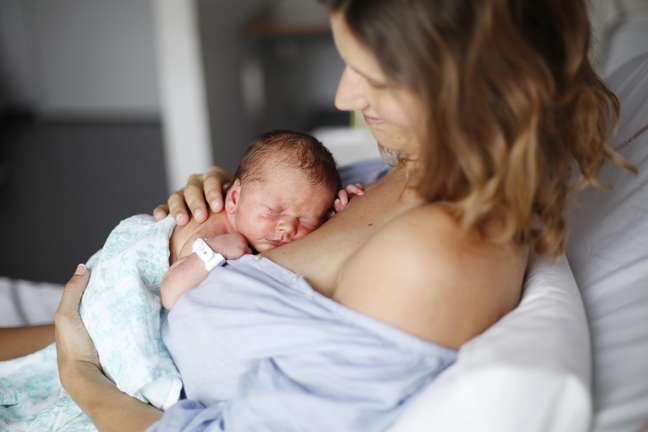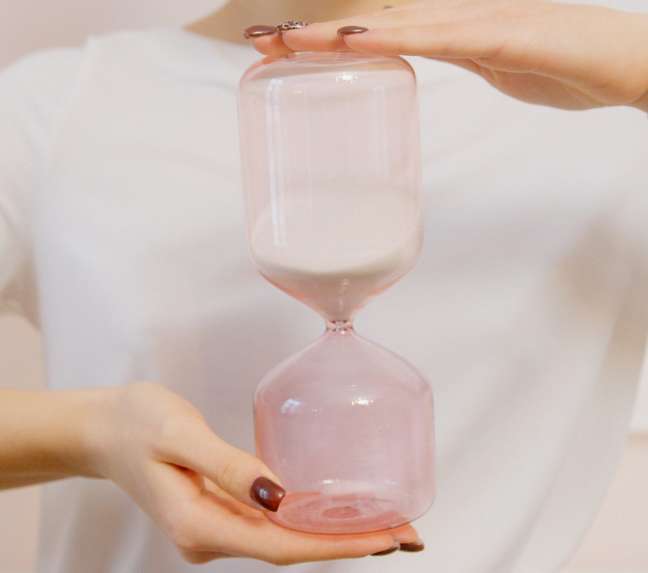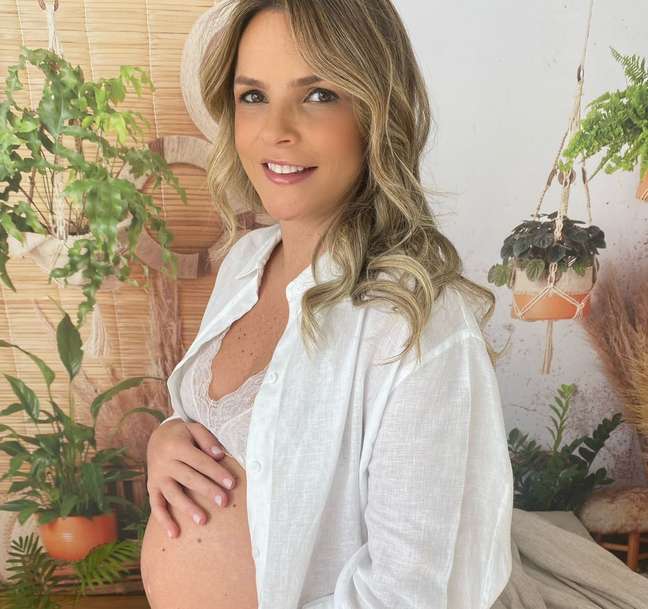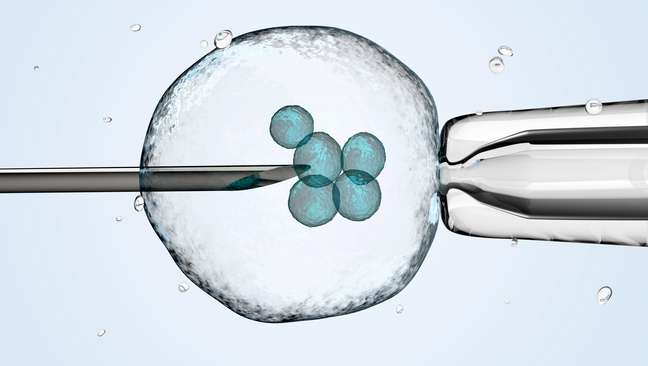Both by intrauterine insemination and by in vitro fertilization, it is possible to generate a child from the sperm bank. Find out how this process happens.
You study, you start work, you start a postgraduate course, you end a long relationship and, suddenly, you realize that you are over 35 and the old – or new – wants to be a mother. reminds you that your eggs are aging even if you feel like you are in the prime of life. In this sense, time is really cruel to women.

Not having a partner when time starts ticking raises a lot of questions. What if you don’t have time? What if I keep waiting or watching and missing the chance to have a baby? Currently, with the increasingly strong presence of women in the labor market, this situation has become more common. Women who, as men have always known how to do, want to focus on their careers and settle down before having a child. And this is where science comes into play: today independent reproduction is a real possibility, even if still limited to a very specific group.
motherhood and career
“There is a very typical profile for women who wish to have a so-called ‘independent pregnancy’. are those in the age group over 35 or 40, single or who were previously married, highly educated and in leadership positions in their professional areas, “explains Fernando Prado, gynecologist, obstetrician and specialist in Human Reproduction, clinical director of New life and medical coordinator of Embriológica.
Publicist Flávia Janini, 42, is one of those women who sought independent reproduction to make her dream of motherhood come true. Looking ahead, she had already frozen her ovules by the age of 36 and when the Covid-19 pandemic began, she felt it was time to pursue that desire.
“I thought about my age and the time it would take to meet someone, as well as the fact that that person also had to want to start a family. Also not to be in a hurry, I tried to do it independently. I didn’t have to keep this accusation in my head and ‘the order changed’, “says Flávia, who is now Bruna’s mother of four months, the result of this trial.

The requirements for an independent pregnancy
In an ideal scenario, the woman who wants to get pregnant, whether alone or not, needs an assessment of her health. Therefore, when you seek this type of treatment, you are subjected to a series of questionnaires and tests. “You cannot have chronic decompensated diseases, such as diabetes, high blood pressure or thyroid disorders. In addition, she should start using vitamins to prepare for pregnancy and a consultation with a nutritionist or nutritionist is also recommended, “warns Fernando Prado.
According to the expert, ideally, the woman should be under the age of 50. Above this age, the risks to pregnancy should be analyzed in detail with the obstetrician.
“It is also worth remembering that having a support network to help care for the baby after birth is essential. This woman will return to her activities and will need the help of a nanny, friends, family or even a new partner or relationship partner, “she draws the doctor’s attention.
Flávia says she received a lot of support from her friends and brothers, who encouraged her throughout the process. “Of course, we never know what awaits us, we try to plan as much as possible, but it was important to know that I could count on them“My mother and my grandmother, who is 98 years old (and who was honored in choosing the baby’s name), found out little by little, she points out. The issue of raising a child alone was a bit worrying for them, but then they gave me a lot of support, “she recalls.

Assisted reproduction methods
Independent reproduction can occur in two ways: by uterine insemination and by in vitro fertilization, IVF. In both cases, the sperm comes from an anonymous donor that the woman will choose from a database, which carries information such as age, height, profession, interests, genetic problems, among others. It is worth remembering that, in Brazil, it is not allowed to reveal the identity of donors.
“During insemination, the processed sperm is introduced into the uterine cavity with the help of a catheter. After that, the process is all natural: the sperm has to swim to the fallopian tube, find the egg, fertilize it and form the embryo. This, in turn, will divide and migrate back into the uterine cavity, where it implants itself to generate a pregnancy “, specifies the specialist.
As for in vitro fertilization, there is more medical intervention, as the midwife explains: “The semen is processed in the laboratory and used to fertilize the eggs that were previously taken from the ovaries. Subsequently, the formed embryos remain in an incubator and develop for 5 days, until they reach a stage of maturity, called a blastocyst. Then, this blastocyst is transferred ready-made into the uterine cavity, including by a catheter. All he has to do is implant and generate the pregnancy “.
The choice in the sperm bank
For Flávia, one of the most difficult phases of the whole process was the choice of the donor. “It’s kind of shocking that you go to a website and start filtering who your daughter’s father might be. Because in real life we don’t go that route. I ended up opting for the genetic part a lot, looking at diseases or things like that, “she says. For her this was the most time-consuming part, which took about six months.
“Then, you go through hormone stimulation, doing injections and doing all the follow up. They make you swell a little, but nothing that causes such discomfort. The transfer is a very magical and special moment, you see the embryo being inserted into your uterus, it’s something I’m filming “. he says affectionately.

Decision that needs planning
Although Flávia considered the process relatively simple, she says worries are inevitable. “I thought, for example, about what it would be like after, with my daughter asking about her father,” she says. That’s why having a psychological background and a strong support network – both for practical help and to talk and let off steam – is so important.
“I think that if a woman has this desire, she should follow it, but also plan and structure herself, after all she is a child. We need to think about the financial question, because a child is expensive, and also have clear ideas, be psychologically prepared. I went to therapy because I knew more questions would arise later, so I had to work as ‘soon’ as possible, “she says.

The cost of in vitro fertilization
In Brazil the sperm donor must remain anonymous, but in the United States, for example, no. What some women do here is import sperm – procedure that must be carried out, compulsorily, through the intermediation of a Brazilian human reproduction clinic, as established by Anvisa.
According to Fernando Prado, the values of an in vitro fertilization can vary a lot, depending on the chosen clinic. Generally, it is between 15 and 30 thousand reaisand buying semen from a US bank costs 7 to 10 thousand reais.
+The best content in your email for free. Choose your favorite Earth Newsletter. Click here!
Source: Terra
Benjamin Smith is a fashion journalist and author at Gossipify, known for his coverage of the latest fashion trends and industry insights. He writes about clothing, shoes, accessories, and runway shows, providing in-depth analysis and unique perspectives. He’s respected for his ability to spot emerging designers and trends, and for providing practical fashion advice to readers.







